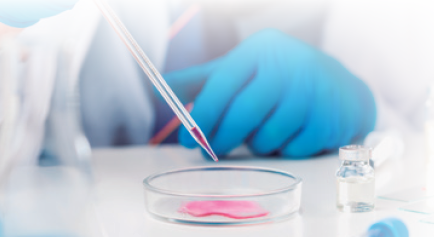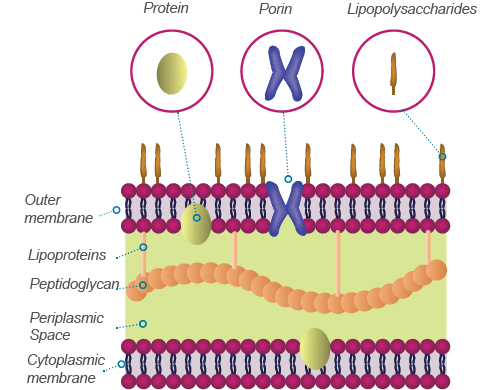
Available in other languages:
Content available at:
Español (Spanish)
The importance of endotoxins in poultry production is a subject f much interest in some regions, as a result of marketing in the recent years of several products having positive effects in birds, while other works showed adverse effects in other species.
Something we quickly detected when reviewing some of these reports indicating effectiveness in birds, is the absence of measurements indicating that endotoxins were actually present in the animals evaluated. Therefore, it is worth asking,
How can we associate improvements in production parameters when using these additives if they do not detect the presence, absence or decrease in the level of endotoxins in treated animals?
We fully understand that a major limitation in detecting whether these toxins are present in animals is being able to use reliable laboratory tests to measure their concentration in blood, urine or feces.

What are endotoxins?
They are structural components of Gram Negative type bacteria, regardless of pathogenic or non-pathogenic, consisting of protein material and fats that form the outer membrane of the bacterial cell wall.
Gram Negative bacteria have a cell envelope that contains three layers or membranes:
Since Gram Positive bacteria do not have an outer membrane, they do not contain endotoxins.
Structural diagram of a Gram-negative bacterium.

In bacteriology, the term is used for a complex containing lipopolysaccharides (LPS) associated with the outer membrane of bacteria such as Eschericia coli, Salmonella, Pseudomonas and Pasteurella, among others.
The most important bacteria from the point of view of animal health that contains endotoxins, belong to the group of Enterobacteriaceae and in many cases are part of the normal intestinal microbial flora of birds and mammals (including humans).
LPS are composed of three elements: Lipid A, nucleus and O antigen .
Figure 2. Important structures in a Gram-negative bacterium.
Two mechanisms have been detected:
1. Production during the initial phase of bacterial growth, both in the laboratory (in vitro) and in animals (in vivo) .
2. Product of the destruction (lysis) of bacteria by the effect of the immune system or antimicrobial agents.
When animals are subjected to an excessive level of stress, as in the case of farrowing in mammals, the level of free endotoxins in the body increases. Once the balance established in the intestinal microbial flora is lost (dysbacteriosis or dysbiosis), the final result of these conditions is the development of Salmonellosis and/or Colibacillosis.
In other words, the absence of some beneficial bacteria, for example, Lactobacillus, will allow pathogenic bacteria to grow in the intestines.
Unlike endotoxins, exotoxins are secreted by bacteria and small amounts are very lethal, as in the case of botulism and secretions can be converted to toxoids, as in the case of the tetanus vaccine, produced by Clostridium tetani .
Can endotoxins cause harm to commercial birds?
For decades, deleterious effects have been observed when injecting bacterins prepared with Gram-negative pathogens. Scientific publications have shown that by injecting small concentrations of endotoxins from Pasteurella multocida into broilers, the clinical signs of acute cholera can be reproduced, without the need to challenge the whole bacteria.
The best example of this type of damage at a commercial level is the effect of the application of the bacterin against Avian Cholera, which is characterized by causing decline and fever in vaccinated birds (pullets) in growth.
On the other hand, the reactions at the application site are very important due to seizures at the slaughterhouse level, especially when using oil emulsions.
A recommendation by the biological and genetic lines companies that illustrates the importance of endotoxins when vaccinating, is to keep vaccines at an average temperature of approximately 37 ºC because overheating causes the release of endotoxins contained in the suspension vaccine. The release of endotoxins present in the vaccine causes severe reactions and mortality and can cause a hemorrhagic syndrome.
The most important thing is to determine if they are actually causing any harm to birds, before investing in prevention. If a real effect is determined, the following strategies can be used.
1. Vaccines with endotoxin segments. Lipid A has been used experimentally to obtain protection. The big drawback is the high cost of production.
2. Use of mycotoxin binders mixed with the feed (Clay or organic binder). In in-vitro tests, about 90% of adsorption capacity of endotoxins is reported, however this does not mean they necessarily work when used in animal feed.
Several scientific tests carried out on pigs in the United States have demonstrated the efficacy of some clays in neutralizing the negative effects, diarrhea and poor productive parameters, by challenging experimentally with pathogenic strains of E. coli. Although endotoxins are not measured in these reports, it is speculated that part of the effectiveness of these products is a consequence of neutralizing the endotoxins released by the bacteria used in the challenge.
3. If we want to prevent the impact of endotoxins when applying bacterins, it is critical to follow the recommendations on the application of vaccines issued by the manufacturing companies.
In conclusion, despite the fact that the adverse effects caused by endotoxins in pigs and commercial-type dairy cattle seem to be more defined, in the case of commercial birds their impact is not categorically supported.
Subscribe now to the poultry technical magazine
AUTHORS

Layer Longevity Starts at Rearing
H&N Technical Team
The Strategy for a Proper Infectious Bronchitis Control
Ceva Technical Team
Elevate Hatchery Performance with Petersime’s New Data-Driven Incubation Support Service
Petersime Technical Team
Maize and Soybean Meal Demand and Supply Situation in Indian Poultry Industry
Ricky Thaper
Production of Formed Injected Smoked Chicken Ham
Leonardo Ortiz Escoto
Antimicrobial Resistance in the Poultry Food Chain and Novel Strategies of Bacterial Control
Edgar O. Oviedo-Rondón
GREG TYLER INTERVIEW
Greg Tyler
Insights from the Inaugural US-RSPE Framework Report
Elena Myhre
Newcastle Disease: Knowing the Virus Better to Make the Best Control Decisions. Part II
Eliana Icochea D’Arrigo
Avian Pathogenic E. coli (APEC): Serotypes and Virulence
Cecilia Rosario Cortés
The Importance of Staff Training on Animal Welfare Issues in Poultry Industry
M. Verónica Jiménez Grez
Rodent Control is a Key Factor in Poultry Biosecurity and Sustainability
Edgar O. Oviedo-Rondón